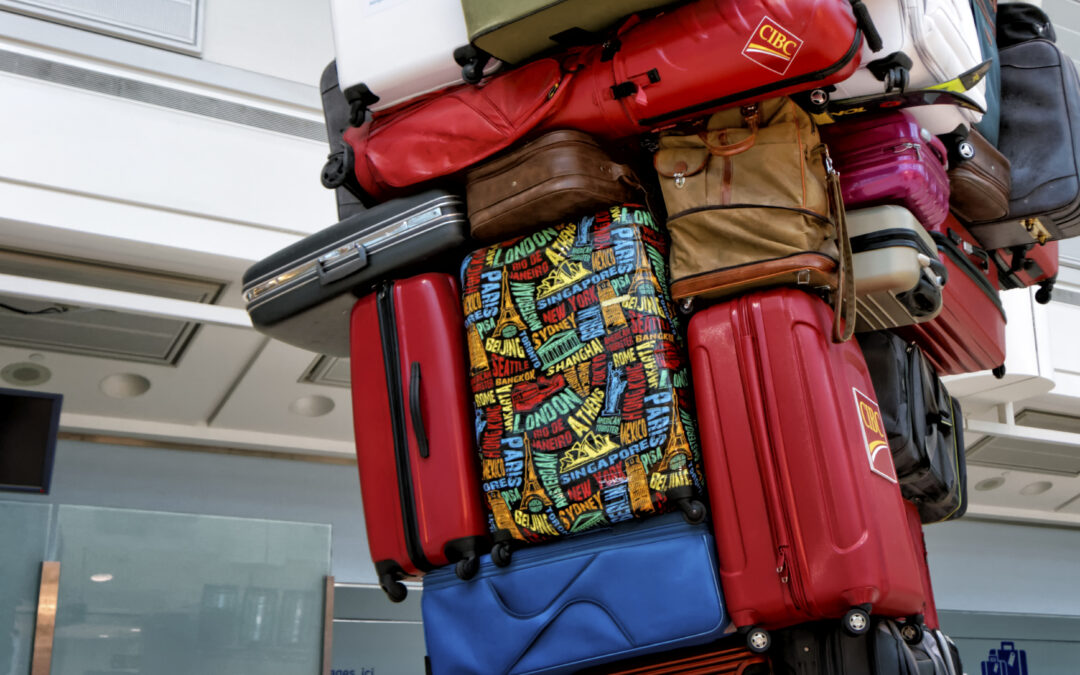
by Lori Vande Krol | Jun 15, 2018 | Delegation, Time Management
 Today is cleaning day at my house, one of my favorite days of the month. Before you think I’m crazy, I should tell you that I don’t clean my own house…we hire someone to do that chore for us. About 10 years ago when I left my stable corporate career to start my business, my husband and I discussed ways we could cut back on expenses for a while. When the topic of the cleaning lady came up, we both quickly dismissed it as a feasible area to cut. Here’s why…
Today is cleaning day at my house, one of my favorite days of the month. Before you think I’m crazy, I should tell you that I don’t clean my own house…we hire someone to do that chore for us. About 10 years ago when I left my stable corporate career to start my business, my husband and I discussed ways we could cut back on expenses for a while. When the topic of the cleaning lady came up, we both quickly dismissed it as a feasible area to cut. Here’s why…
1. While I love to organize, I do not love to clean. My housekeeper has amazing passion and skill for her work.
2. I am a perfectionist. I’ve gotten better after having three small children, but I know if I tried to clean my own house, I would get distracted by the “cluttered” cabinets and closets, the grout that is no longer white, and the many small home improvement projects that need to be done. It would take me much longer to do the work than my efficient cleaning lady.
3. Having a housekeeper that is scheduled to come every two weeks holds my family and I accountable for getting our house picked up and organized at least that often. You may be surprised to know that an Organization and Productivity Expert’s house is not always spotless. I train my clients that it isn’t important to be perfect all of the time – but to have the systems and tools in place to recover quickly when needed. Having that built-in accountability is important and allows us to develop habits and processes around it.
I challenge you to think of one task or area – at home or work – that you dislike or is not your strength. How much time and energy do you waste each month doing something you dread or that someone else may do better? Maybe there’s a project that is important to you but you procrastinate doing at all. Who can you find to delegate this task or area to? Is there a team member or family member that is a better fit for the task? Is it time to hire an expert to assist or to provide needed accountability?
The most successful people in business and life have learned how to let go, how to delegate, and how to focus their time and energy on their strengths. I’d love to hear what you have decided to let go of and how it has changed your work and/or life.
Now, I’m off to enjoy my clean home….at least for a bit until the kids get home.

by Lori Vande Krol | May 15, 2018 | Travel
“Trip enjoyment is inversely proportionate to the amount of crap (re: distractions) you bring with you,” according to Tim Ferriss, author of The 4 Hour Workweek.
I love to travel. I love the excitement of the journey and the fun of the destination. But, I do not enjoy travel preparation. Recently my frequency of travel has increased, spurring me to research ways to reduce the stress and time it takes to prepare. This is obviously a popular and passionate topic among many of you because when I asked my friends and followers on Facebook for their top travel tips, I was blown away by the response.
Individuals responding to my request for “top travel tips and tools” include those who travel frequently for business, with large families, internationally and more. Below I have gathered and organized all of these amazing tips along with a few of my own. You will learn what to do before you go, what to pack, and how to pack efficiently. Credit has been given for those tips that were submitted. Thanks to all who took the time to share!
Before You Travel
- Scan your important documents in case you lose the paper. Better yet, use a travel app to store frequent flier numbers, boarding passes and other travel information. Most apps allow you to email confirmations directly to the app and to receive notifications of delayed or cancelled flights. TripIt comes highly recommended by Billi Hunt and Grace Van Cleave, while Ingrid Guttin recommends using Tripcase or your airline’s unique app.
- Call ahead to your hotel to make sure they have internet access. Ask that they put you near the router for a stronger signal (from Your Social Success).
- Create a contact list for those at home so everyone knows where you are and who to contact in case of an emergency. In addition, be sure to have important numbers with you while you travel, e.g. vet, doctor, pharmacy, neighbor and plumber (from Athenée Mastrangelo, Action Chaos).
- If you have children at home, complete a Child Care Authorization Form which authorizes named persons to provide medical care while you are away (from Ann Dieleman). Becky Ackerson Stark recommends having it notarized, sealed in an envelope, along with the doctor’s and dentist’s business cards and an insurance card, and labeled “EMERGENCY.”
- Stop your newspaper delivery and use the Hold Mail Service offered by the United States Postal Service (from Regina Lark, A Clear Path).
- I’m almost afraid to let this one out of the bag, but…Apply for TSA Pre-Check! For $85, you can avoid the long security lines, keep your shoes on and your laptop can remain in its bag. After receiving your Known Traveler Number, it is good for five years. It’s amazing!
Packing Tips
There seems to be two camps in the packing arena – either “Yah, I check a bag. Is there another option?” or “ABSOLUTELY DONT CHECK A BAG”. Those that don’t check bags feel it saves time at the airport and minimizes the risk of a lost or delayed bag. I recently challenged myself to travel without checking a bag for the first time. The key is packing efficiently, and many of the tips I used are shared below. While I do agree that having only two carry-on bags saved time at the airport, I was cursing that extra carry-on as I ran from a delayed flight, across the airport, to catch my connection. There are pros and cons to each option, so you need to decide which works best for you. Below is a list of packing tips that covers both options.
What to bring:
- Invest in good quality, lightweight luggage. If you check it, be prepared for it to get wet and/or dirty. Tie on a bright or unique luggage tag or ribbon to easily spot your bag on the carousel.
- Research the bag and weight requirements for your airline. Be prepared to remove items from a checked bag to avoid the additional charge for overweight bags. Smaller planes will require you to check your carry-on bag when boarding, so also be prepared to remove any items you will need on the plane. Consider sticking a soft, foldable bag in your purse or briefcase for this reason. (from Lori Rubin, South Bay Closet Lady, and Kim Oser, Need Another You)
- Wear slip-on shoes (from Herb Wamboldt). Or, Lisa Montanaro from Lisa Montanaro Global Enterprises recommends bringing a pair of booties or small socks to slip on before going through security. Then, you don’t have to step barefoot onto the dirty floor. You can also avoid taking your shoes off with TSA Precheck (see suggestion above). Wear your heaviest shoes and pack the rest.
- If your electronic requires a 3-pronged outlet, bring an adapter in case there is not a 3-pronged outlet available in a convenient location (from Your Social Success). (Note that this will disable the safety feature that protects you from electric shock if a wire comes loose.) In addition, a universal adapter may be needed if traveling out of the country (from Lori Rubin).
- Choose a simple color scheme for clothing. For example, pack black pants, skirt or suit with any color tops. Then, you can mix and match different outfits and require less shoes and accessories (from Athenée Mastrangelo and Ann Dieleman).
- For the ladies, pack a light pashmina in a neutral color in case it gets chilly on the plane or in the terminal (from Natalie Conrad, Organized Habits).
- Pack a long extension cord so you can have access to electronics anywhere in the room (from Monica K. Cogger). Kim Oser recommends a multi-outlet extension cord for even more flexibility.
- Ellen Faye from Ellen Faye Organizer recommends packing a couple of medium Command Hooks and Command Strips in your travel kit. Then, you can hang your travel kit in the bathroom if there isn’t a logical hook. This is also a great idea when traveling with a larger group as there never seems to be enough hooks for towels and wet swimsuits.
- Consider small gum or candy containers for storing smaller items such as Q-tips and bobby pins (from Anjeanette Newville).
- Bring a list of your prescription medication, including dosage, and a copy of the prescription. Also, pack a few extra days worth for delays and emergencies (from Lori Rubin).
- Free up luggage space by packing a travel multi-outlet like the Belkin SurgePlus 3-Outlet Mini Travel Swivel Charger Surge Protector with Dual USB Ports. You can recharge your electronics with the USB ports and leave the charger adapters behind. In addition, if you are at the airport and the outlets are full, ask someone if you can plug in your multi-outlet and it gives three more people a place to charge (from Kim Oser).
- Pack ear plugs in your carry on for the plane. Lisa Montanaro recommends EarPlanes to not only block out noise, but to help equalize the air pressure upon takeoff and landing.
- Ladies: Bring a smaller, cross-body purse for safety and lighter walking. Once at your destination, keep your wallet and passport in your hotel safe. Carry only one credit card, a bit of cash and a copy of your passport (from Lori Rubin).
Organized Packing:
- Use a checklist app on your mobile device to check off packed items while preparing to travel, uncheck them as you unpack upon arrival, then check them off again as you prepare to return home. You might have different checklists for different types of travel. Judith Guertin, All Ways Organized, recommends the Wunderlist app.
- Stock and restock your toiletry bag after every trip so there’s no last minute scramble (from Nicole Chamblin, Visions Productivity Solutions). Billi Hunt also keeps her make-up bags fully loaded with personal beauty needs. She recommends putting any new cosmetics in your travel bags. Then when you run out at home, you can use the packed items to replace, restock with new and know that your stored travel products will not get old.
- Store all chargers, cords, jump drives and other technology in zipper bags or pouches in your carry on (from Ann Dieleman and Ellen Rubin Delap, Professional-Organizer.com).
- If you check a bag, be sure you have important items in your carry-on bag, such as a change of clothes, medications, electronics and valuables (from Lori Rubin). You may also want to pack a swimsuit, cover-up, flip flops and a trial sized sunscreen if heading to a warm weather destination. Then if your checked luggage is lost or delayed, you can still enjoy the beach or pool while waiting for it to arrive (from Kim Oser).
- Use shower caps on shoes to protect clothing from any dirt on the soles.
- Avoid tangled necklaces by putting them through plastic straws and clasping them.
- Put a dryer sheet in your suitcase to keep your clothes smelling fresh.
- If you check bags, unscrew bottle caps, put saran wrap over bottle openings and replace lids to prevent leaks from change in air pressure.
- Pack for each day. For example, use a large Ziploc bag for each complete outfit. After wearing, put it back in the bag to store the dirty clothes. It’s easy to “file” the outfit bags in your suitcase and can save space. (from Regina Lark and Athenée Mastrangelo)
Space-Saving Tips:
- Put small amounts of select toiletries (such as lotions, gels and creams) in small carrying containers to minimize the space needed in the required quart-sized baggie for carry-ons. Typically, only a very small amount of the bottle or jar is needed. Consider using snack-sized baggies that are rolled or folded. Kristie Roehr Sigler also recommends contact cases as a small storage solution.
- Ask your hairstylist for samples of your favorites (one sample typically has 2 uses in it). Look for makeup, lotion and perfume/cologne samples at a makeup counter. You can easily fit 1+ week of sample packets in your liquids bag.
- Never pack a bulky blow dryer as most hotels have them available.
- Fill a straw with toothpaste using a syringe. Cut the straw into sections and burn the ends closed.
- Pack belts and socks and other small items inside shoes that is otherwise dead space.
- Count out medications and put them in a baggie. Leave the bulky bottles at home.
- Scale back your toiletry bag. Do you have items there that you don’t use daily?
- Some believe that rolling clothes when packing results in fewer wrinkles and a better use of space (from Ann Dieleman and Becky Ackerson Stark) while others prefer the bundling method as shown in this must-see video sent by David Jackson.
- Pack a lightweight, absorbant, quick drying towel such as this one from Waves.
- To avoid checking a bag, consider purchasing some of the larger items when reaching your destination. This will likely be less expensive than paying the fee to check a bag.
- If you are a very frequent traveller, Tim Ferriss, author of The 4 Hour Workweek, shares some unique tips for travelling light in his blog: How to Never Check Luggage Again. Thanks to Tyler Osby for sharing.
Which of these tips will you try next time you travel? What additional travel tricks have you used? I’d love to hear from you! Comment below or get it touch at lori@alifemadesimple.com.
If you liked this article, join our mail list to receive our “almost monthly” newsletter containing tips, tools and information like this! Just enter your email address on our Home Page – it’s that simple!

by Lori Vande Krol | Mar 15, 2018 | Technology
 Let’s face it. While passwords serve the needed purpose of protecting our digital information, most times they can just be a pain. To be effective, passwords must be changed often, be unique to each application, and contain a good mix of letters, numbers and characters. And, they shouldn’t be written down! If done the right way, remembering all of our passwords and coming up with new, unique combinations is almost impossible. Below I share two simple strategies for making this mundane task easier and perhaps even inspiring.
Let’s face it. While passwords serve the needed purpose of protecting our digital information, most times they can just be a pain. To be effective, passwords must be changed often, be unique to each application, and contain a good mix of letters, numbers and characters. And, they shouldn’t be written down! If done the right way, remembering all of our passwords and coming up with new, unique combinations is almost impossible. Below I share two simple strategies for making this mundane task easier and perhaps even inspiring.
1. Use a Password Manager such as LastPass, RoboForm, Dashlane, or Keeper. Password Managers store your log-in information for all the websites you use and allow you to log into them automatically. The master log-in for the secure and encrypted password database is the only one you have to remember. Password Managers not only store your log-ins in a secure environment, but can generate strong passwords for you or provide a strength score for your manually created passwords. PCMag has a great review of some of these managers.
2. An article from the website Medium.com suggests using passwords to inspire and motivate you towards a certain goal.
The author shares his story, “So there it was…This input field with a pulsating cursor, waiting for me to type a password that I’d have to reenter – many times – for the next 30 days. Then, letting all the frustration go…I thought, ‘I’m gonna to use a password to change my life.’
…My password became the indicator. My password reminded me that I shouldn’t let myself be a victim of my recent divorce and that I’m strong enough to do something about it.
My password became: “Forgive@h3r”
I had to type this statement several times a day. Each time my computer would lock. Each time my screen saver with her photo would appear. Each time I would come back from eating lunch alone. In my mind, I wrote Forgive her every day.
The simple action changed the way I look at my ex-wife. That constant reminder that I should forgive her, led me to accept the way things happened at the end of my marriage, and embrace a new way of dealing with the depression that I was drowning into. In the following days, my mood improved drastically.
One month later, my dear exchange server asked me again to renew my password. I thought about the next thing I had to get done. My password became: “Quit@smoking4ever.” And guess what happened. I’m not kidding you. I quit smoking overnight.
This is how I learned that I can truly change my life, if I play it right. I kept doing this repeatedly month after month, with great results…”
Source: Maurico Estrella. Medium (May 15, 2014), Medium.com.
What goals can you write into your passwords? I’d love to hear how your life is changed.

by Lori Vande Krol | Feb 15, 2018 | Team Productivity
When someone chooses to follow me on Twitter, the follower receives a response asking “…what productivity-related topics would you like to see?” Most of the comments I receive in response relate to decluttering information, time management, or questions about productivity apps. Thus, the following response from @StartFreshHere intrigued me: “Anonymity is a killer in the workplace – different ideas on honoring great work, and work ethic!”
It isn’t surprising that employee productivity and performance is directly correlated with the recognition they receive. A January 2007 survey by staffing firm Accountemps found that “frequent recognition of accomplishments” was the top non-monetary compensation named by full- and part-time office workers.
Whether you manage a business, a team, or a family, the same rules apply. If you haven’t built recognition into your management processes, you may be killing your team’s productivity and morale. While recognition is best done regularly throughout the year (consider scheduling reminders for set times or after large projects), the end of the year is a great time to reflect and acknowledge great work.
Following are tips to consider when creating, or improving upon, a recognition program for your employees or team members:
- Some individuals appreciate public recognition, while others would rather remain private. Don’t make assumptions. Ask them – How do you like to be thanked/recognized?
- Be specific with your recognition. Focus on the specific traits and behaviors you value most and would like to see continue.
- As for ways to recognize your employees, here are some ideas to get you started:
- Non-public:
- A financial bonus or gift certificate for a spa, a store that matches their interests, dinner, movies, or another local experience
- A unique gift that shows you know them. For example, after a long tax season, a manager gave a dog-lover on his accounting team a framed photo of her dog and a gift certificate to a dog spa
- An inspirational/motivational book
- Extra time off or flex-time
- Public:
- A team dinner or meeting with public recognition for high performers
- A team “thank-you” lunch
- Flowers
- Create a “Wall of Fame” to showcase outstanding contributions
- Give the employee the best parking spot for a period of time
- Ask employees to nominate each other for a weekly award
- For more ideas: 151 Quick Ideas to Recognize and Reward Employees
I’d love to hear what has worked well for you when recognizing employees or team members. Share your feedback with me on Twitter(@lvandekrol) or Facebook. Use #employeerecognition.

by Lori Vande Krol | Jan 15, 2018 | Technology
Recently, my Project Digital Sanity colleagues and I had the great opportunity to present to our peers at the NAPO conference in Phoenix. As part of this, we created a checklist for tackling the endless amount of digital information we receive daily. When we are overwhelmed by our digital information, it’s often difficult to know how and where to start to address the related challenges. Step back, take a deep breath, and visualize what digital sanity looks like for you. Then, walk through the checklist below to reach your vision step by step.
The Prodigitivity Approach™
1. Declutter
- I have identified target areas for digital purging.
- I have set clear criteria for what to purge.
- I have a strategy for decluttering my digital desktop.
- I have a strategy for decluttering my email inbox.
- I have a strategy for purging my digital folders.
2. Develop Structure
- I have selected a context for my digital filing structure
- I have identified 5-7 top-level information buckets.
- I have a structure for current work on my digital desktop.
- I have determined standards for naming my folders.
- I have a plan to migrate files to my new structure.
3. Capture
- I know all of my points of entry to reduce/consolidate.
- I have criteria/tools to capture content in email.
- I have criteria/tools to capture web-based content.
- I have tools/processes to capture thoughts & notes.
- I have a strategy to convert paper assets to digital form.
4. Processing
- I have evaluated my digital documents’ life cycle.
- I have a mapping strategy for examining my workflow.
- I use a triage method for processing my email.
- I am investigating ways to automate my processes.
- I use a standard format for my task statements.
5. Findability
- I have naming standards for my documents and files.
- I am building proficiency in my search skills.
- My desktop is arranged for finding my current work.
- I use metadata, keywords and tags to find documents.
- I am aggregating information into accessible portals.
If you are interested in some assistance, accountability and motivation as you work through these steps, schedule time time today for your free phone assessment.

 Today is cleaning day at my house, one of my favorite days of the month. Before you think I’m crazy, I should tell you that I don’t clean my own house…we hire someone to do that chore for us. About 10 years ago when I left my stable corporate career to start my business, my husband and I discussed ways we could cut back on expenses for a while. When the topic of the cleaning lady came up, we both quickly dismissed it as a feasible area to cut. Here’s why…
Today is cleaning day at my house, one of my favorite days of the month. Before you think I’m crazy, I should tell you that I don’t clean my own house…we hire someone to do that chore for us. About 10 years ago when I left my stable corporate career to start my business, my husband and I discussed ways we could cut back on expenses for a while. When the topic of the cleaning lady came up, we both quickly dismissed it as a feasible area to cut. Here’s why…


 Let’s face it. While passwords serve the needed purpose of protecting our digital information, most times they can just be a pain. To be effective, passwords must be changed often, be unique to each application, and contain a good mix of letters, numbers and characters. And, they shouldn’t be written down! If done the right way, remembering all of our passwords and coming up with new, unique combinations is almost impossible. Below I share two simple strategies for making this mundane task easier and perhaps even inspiring.
Let’s face it. While passwords serve the needed purpose of protecting our digital information, most times they can just be a pain. To be effective, passwords must be changed often, be unique to each application, and contain a good mix of letters, numbers and characters. And, they shouldn’t be written down! If done the right way, remembering all of our passwords and coming up with new, unique combinations is almost impossible. Below I share two simple strategies for making this mundane task easier and perhaps even inspiring.

Recent Comments